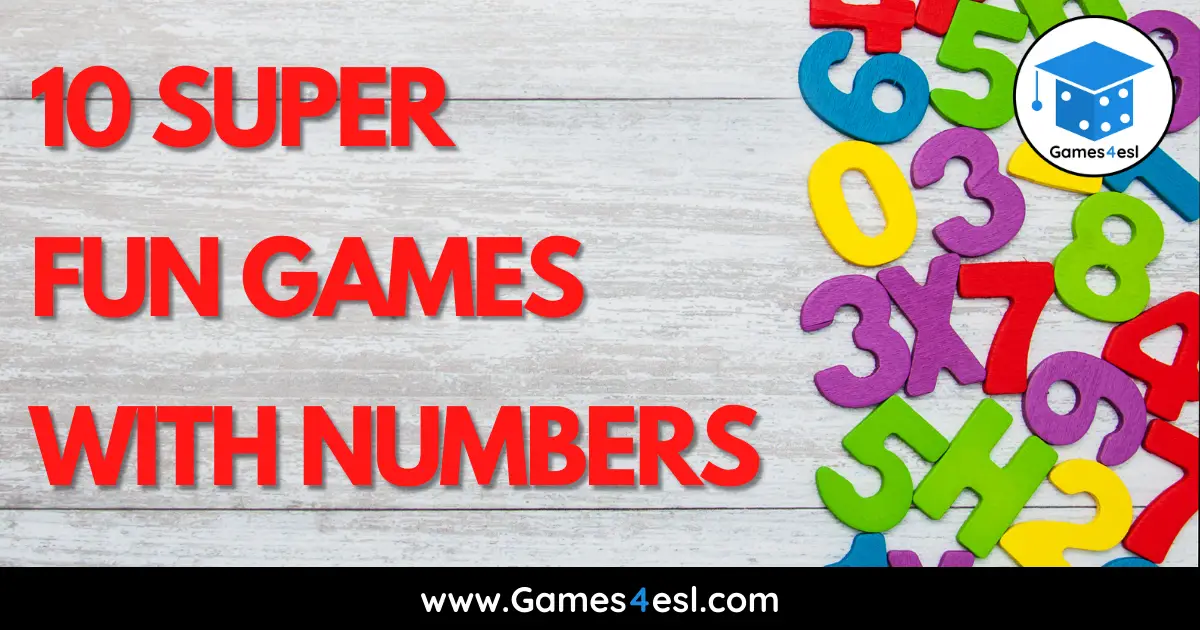10 Super Fun Classroom Games With Numbers
Kids must practice numbers and counting a lot before they can use them confidently and fluently. For kids, this can be quite challenging, especially if English is not their first language. An incredibly effective way to teach English numbers is through playing games.
On this page, you can find ten incredibly fun games with numbers that you can use in your class to teach English numbers to kids. If you like the game ideas on this page, check out our other post about guessing games for more inspiration for your next classroom activity.
Related: Numbers Lesson Plan / Numbers 1 to 100 Spelling Chart
Top 10 Classroom Games With Numbers
1: One, Two, or Three, Game
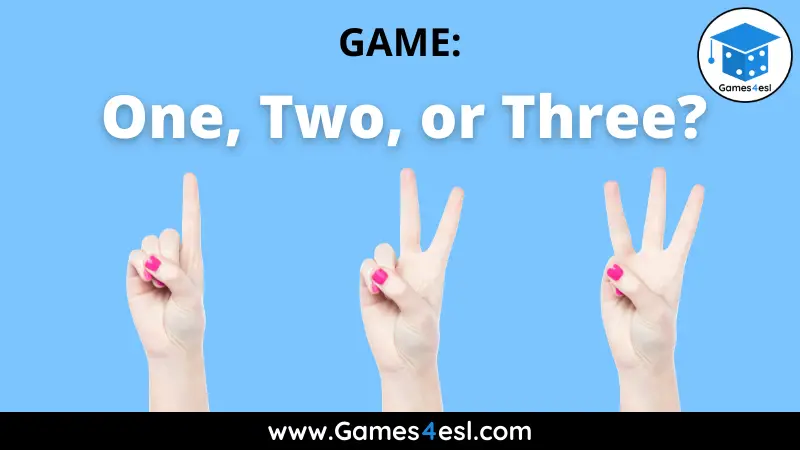
This counting game with numbers is incredibly fun and helps beginner learners to practice basic numbers. To start, choose a number that you are going to count to. A good number for this is 31, but you can use any number. Students will take turns counting until they reach 31. When it’s their turn, students have the choice to say one number, two numbers, or three numbers. The student who says the last number (31) is out.
So, for example, the first student may decide to say two numbers and say “one, two”. Then, the next student may decide to say three numbers and say ” three, four, five”. The next student then may choose to say one number and say “six”. The game continues like this until one student says the last number (31) and is out. This game is great for practicing basic numbers but can also be used with ordinal numbers (first, second, third, etc.) and to practice the date.
2: One, Two, Three, Stand-Up Game
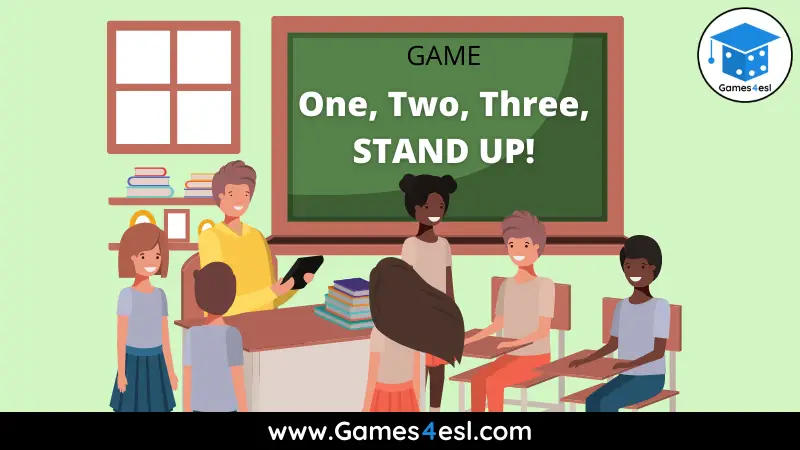
As well as practicing numbers, this game is great to use as a warm-up activity. To begin, choose a number to count to. The number you choose will depend on your class size and how difficult you want the game to be. For this example, let’s choose the number 5. Then, tell the students that when the teacher says ‘Go!’, one student from the class must stand up and say the first number (one). Then, another student must stand up and say the next number (two). And so on until they get to five. Any student can stand up at any time they want. If two students stand up at the same time and say the same number, then they lose.
If you have a large class, then an alternative way to play this game is to divide the class into teams. Give each team 3 chances to get to five. If they succeed, then they get a point for their team.
3: Zingo Number Bingo
Zingo is an award-winning game that develops children’s counting, addition, and number recognition skills. It is a fast-paced and exciting bingo/matching game.One set can be played by up to 6 players. To play, each student will have a different ‘zingo card’. Then students will take turns in sliding the ‘zinger’ to reveal a number card. The student must then try to match that number card to a number picture on his/her zingo card. The first student to fill up his/her zingo card is the winner. All the materials that come with the Zingo game are durable and can be re-used. So, by having a few sets of this game in your classroom you will have a fun and exciting numbers game to use in your class for years to come.
4: Number Guessing Games
A great way to practice numbers while also teaching ‘How many?’ and plural nouns is to play a fun numbers guessing game. Here is one of Games4esl’s ‘Telepathy Games’ about animals and numbers.
In this game, students will be asked, ‘How many (puppies)?’ and then they will see two possible answers. They must choose ONE and write it down. To help them guess the answer they can use ‘Telepathy’ to read the teacher’s mind.
This kind of game is so simple, but kids absolutely love it! Especially when they guess it correctly. For more ESL activity videos, check out our videos page.
5: Liar Game
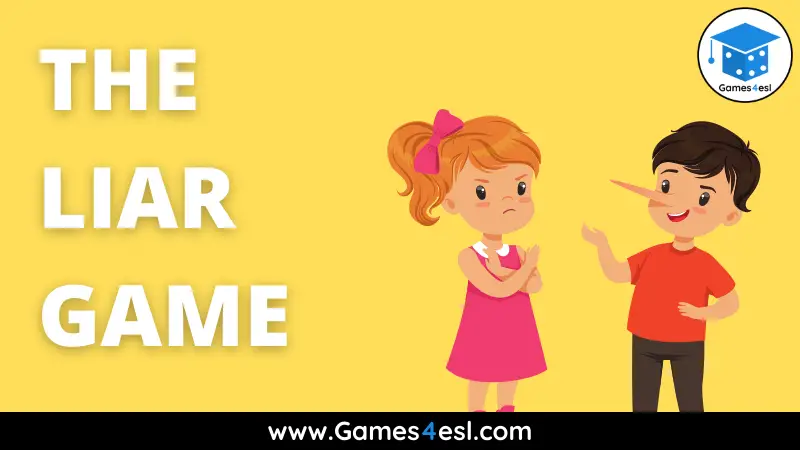
This fun ESL card game can be used to review numbers. For this game, prepare a set of number cards for each student (for this example, we will use a set of 10 cards numbered 1-10). Give one set of cards to each student and put them into groups of 3/4.
Next, ask students to put all their cards face down in the middle of the group and mix them up. Once the cards are mixed, ask students to take 10 random cards and tell them not to show the cards to the other students. Now the liar game can begin.
Students will take turns and MUST put down the cards in numerical order. As they put down the card, they must say that number out loud. For example, the first student should place the number one card face down in the middle and say “one”. Then, the next student must place the number 2 card in the middle and say “two”. If a student doesn’t have the next number card, he/she must lie! So, in this example, the next number is 3. If the student doesn’t have the number 3 card, then he/she must put down a different card while saying “three”.
If, at any point during the game, a student thinks that another student is lying about the card that they placed down, then they can accuse them and shout, “Liar!”. If they are correct and the student was lying, then the student who lied must pick up all the cards in the middle. If a student accuses another student of being a liar, but they did not lie, then the student who shouted “Liar!” must pick up all the cards in the middle. This game is a lot of fun and can be used with other topics, not just numbers.
6: Number Swap

This fun counting game will help students practice numbers while testing their concentration. To play, decide a number that you are going to count to. Let’s say 21 for this example. Then ask students to make a circle. Next, point at one student to start the counting. That student should say “one”, then the next student should say “two”, and so on, clockwise around the circle. The student who says “21” gets to swap one of the numbers for a silly word (e.g. number 3 = banana).
Next, the counting starts again, but this time instead of saying the number 3, students should say ‘banana’. If students forget, and say number 3, then the counting starts again at 1. If they count to 21 without making a mistake, then they choose another number to replace with a silly word.
Once you have 3 or 4 silly words the game becomes incredibly fun and it will really test your students’ concentration.
7: Dice Game – Draw A Monster
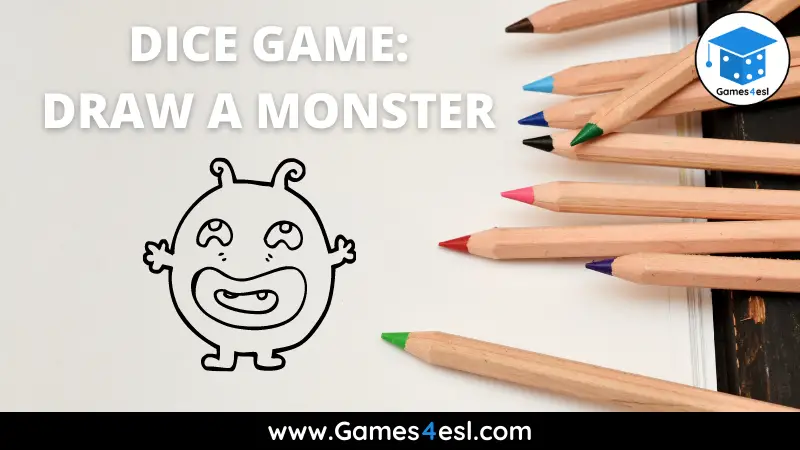
This game is great for practicing basic numbers and body parts at the same time. To play, write the parts of a body on the board. For example, eyes, ears, mouth, nose, head, arms, legs, etc. Then for each body part, roll the dice (or ask a student to roll the dice) and write that number next to the body part word.
Next, tell students that they must draw a monster with the same number of body parts as is written on the board. Give students 10 minutes or so to draw their monster, and then students can show their monsters to the class.
Another way to play this game is to give each student a die. That way, each student will have a very different monster. Then, when showing the monster to the class, the students can describe their monster using sentences and numbers (e.g., “It has five eyes.” “It has three mouths.“, etc.).
8: Make A Group Number Game

This is a very active game to practice numbers that will get your students up out of their seats. For this game, you need a lot of space, so if possible, play this game outside. If not, you can play in the classroom if it is safe to do so.
To play, students must walk around while listening to music. When the music stops, the teacher will shout, “Make a group of (4).”, and students must quickly try to get into a group of that number. The students who do not get into a group of that number are out.
9: Bingo Games
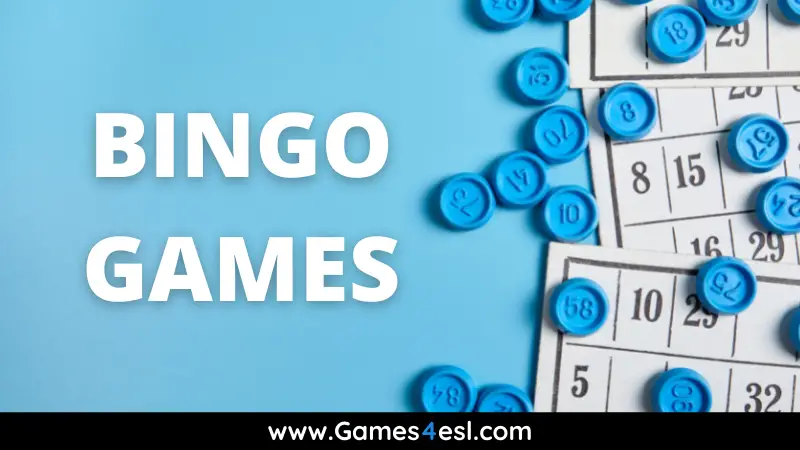
Bingo games are wonderfully simple to make and are very effective when teaching numbers. Here are two variations of bingo you can try in your English class:
Classic Bingo – Ask students to draw a 3×3 grid of squares and then choose nine numbers between 1-20 (or whichever numbers you are teaching) and write them in the squares. Then, the teacher will call out a number, and if that number is on the students’ bingo sheet, then they should cross it out.
A student gets bingo when they cross out all the numbers in a horizontal, vertical, or diagonal line. To make the game last longer, you can tell students that they must make 2/3 lines of bingo to win. Alternatively, make a bigger bingo grid of 12 (3×4) squares or 16 (4×4) squares to make the game more challenging.
Line Bingo – To play line bingo, you need to prepare some number cards for the students. Give each student a set of number cards ( around 8 – 10 cards is best). Then ask students to arrange their cards in a horizontal line in any order they choose. Once students have done that, the game can begin.
As the teacher calls out a number, students should check their line of cards to see where that number is. If the number is on the left end or the right end of the line, then the student can turn that card over. If it is in the middle of the line, then the student cannot turn it over. The aim of the game is to turn over all the cards to get bingo.
10: Number Puzzles
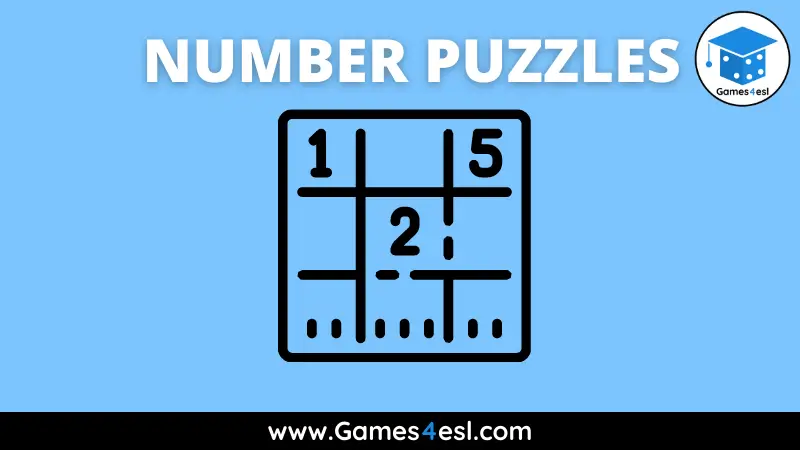
Puzzles can be a great way to review numbers and practice reading and writing out the words. An easy way to quickly make your own puzzles for class is to use a puzzle maker. To make your own word searches, simply type in the number of words you want to practice into this word search maker. To make a numbers crossword puzzle, simply type in your words and clues into this crossword maker.
Thanks for reading. I hope you found some fun games with numbers for your next class. Before you go, don’t forget to check out our free lesson resources, including classroom games, PPT Games, Worksheets, and more.

